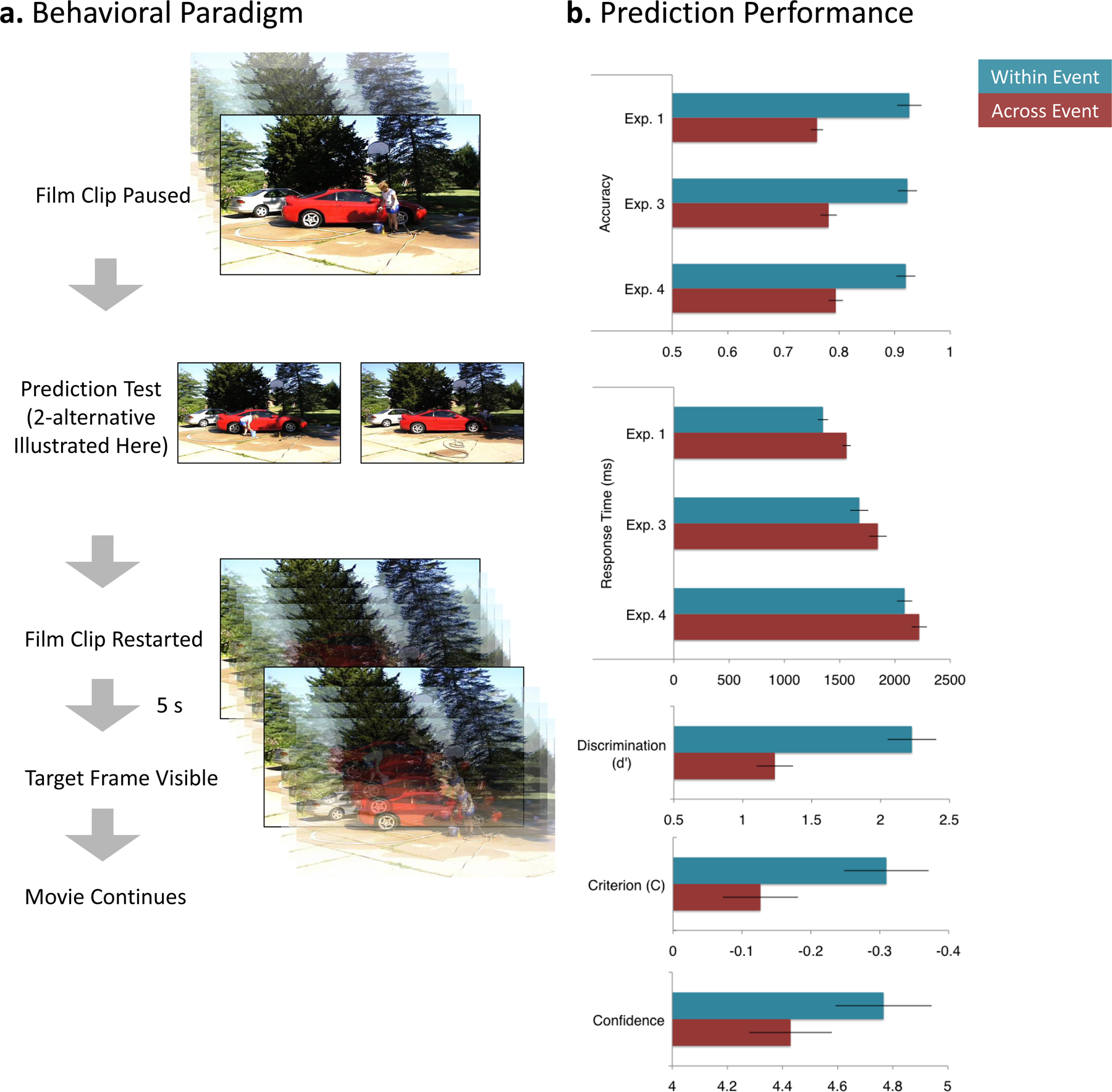Figure 2.

Predicting the near future is more difficult at event boundaries. a. Participants viewed movies of everyday events (247s - 432s duration). Eight times during each movie, the movie was paused and the viewer was asked to predict what would be on the screen in 5 s. Experiments 1 and 3 used a 2-alternative forced choice procedure in which participants chose between the correct picture and a similar-appearing picture taken from a different movie. (In this example the picture on the left is correct.) Experiment 2 used a yes-no procedure in which one of the two possible pictures was presented and participants were required to assess whether it was correct. In Experiment 3 participants made an assessment of their prediction confidence using a 6-point Likert-type scale before the two test pictures were presented. b. By all measures, prediction performance was worse for across-event trials than within-event trials. Statistical tests were conducted using both participants and items as the random effect. In Experiments. 1, 3, and 4, forced-choice accuracy was lower (top graph) and responses were slower (second graph) when predicting across events. [By participants: smallest t(23) = 6.68, p < .001; by items: smallest t(38) = 2.84, p = .007. For response time, by participants: smallest t(23) = 3.28, p = .003; by items: smallest t(38) = 2.42, p = .007.)]Experiment 2 was analyzed using signal detection analysis (Macmillan & Creelman, 1991) which showed that discrimination between correct and incorrect pictures was lower across than within events (third graph; by participants, t(23) = 4.82, p < .001; by items, t(38) = 3.56, p = .001). Moreover, participants’ decision criteria were more conservative across than within events, indicating that, overall, pictures taken from new events were judged less likely to be correct, though this effect was significant only by participants (fourth graph; by participants, t23 = 2.71, p = .013; by items, t(38) = 0.98, p = .335, NS). In Experiment 3, confidence judgments made before presentation of the test pictures indicated that participants were less confident in their ability to predict as they approached a new event (bottom graph; by participants, t(23) = 6.81, p < .001; by items, t(38) = 2.42, p = .021. (Error bars depict standard errors.)
